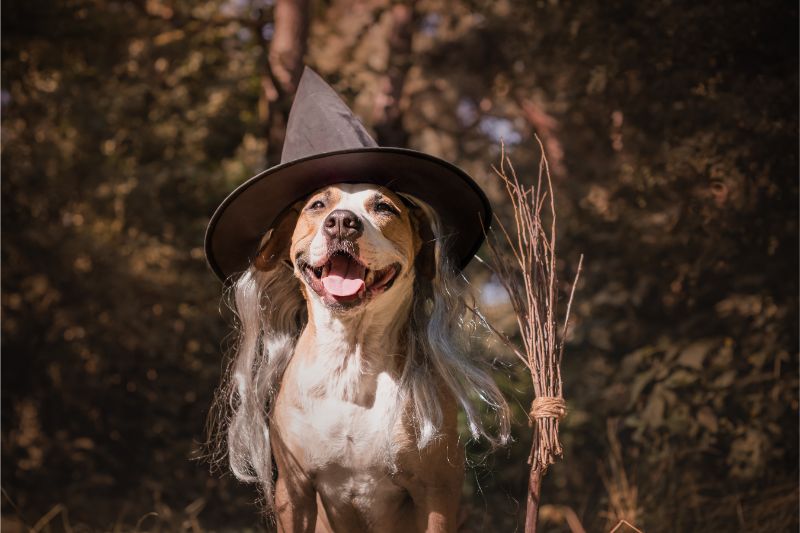
Fright Night is almost here, and many of us are preparing our costumes, planning a spooktacular Halloween bash, or looking forward to the neighborhood trick-or-treat jaunt. Many of us like to include our pets on this day, but is that what’s best for them?
Many pets can greet trick-or-treaters all night or wear their costume with relish. But unfortunately, there are also several pet emergencies that are common on and around Halloween. Keep reading to find out how to keep your pet safe this Halloween.
Tricks and Treats
As with most things, a little advance preparation and awareness can go a long way towards Halloween pet safety. Here are some things to know:
- Treats. You may be thinking that all candy is bad for pets, and you’d be right. Chocolate in particular is toxic to pets and can cause GI upset, diarrhea, muscle tremors, and seizures. Sugar free candy often contains Xylitol, which can cause liver failure. And even candy wrappers like cellophane and aluminum foil can result in a painful intestinal blockage that may require emergency surgery to remove. In addition, other common Halloween treats and rich foods can cause painful pancreatitis. Keep all Halloween treats far away from pets.
- Decorations. The Halloween tricks of scary decorations in and around your house can be fun, but are also dangerous to pets. Electrical cords can cause electrocution if chewed by a curious bunny. Light up or moving decor can scare pets, and string spider webs can cause GI problems if ingested.
- Jack-o-lanterns. It wouldn’t be Halloween without a carved pumpkin or two, but curious pets can knock them over, causing a fire hazard. Birds can be especially sensitive to flames and candles. Keep these outdoors and away from pets, and consider LED lights inside instead of a live flame.
- Costumes. Many people love pet costumes, but do our pets? Never force your pet to wear a costume, and take it off immediately if she is chewing or pawing at it or trying to wriggle out. Avoid masks and hanging pieces, and monitor your pet’s breathing and temperature throughout the evening to make sure she doesn’t overheat. Costumes should never restrict breathing or vision.
Chips and Tags
The constant opening of the front door, the noise, and the general commotion of the holiday creates a real possibility of your pet getting lost. Make sure your pet has a collar and current tags on.
A microchip is your pet’s best chance of being reunited with you should she become lost. Make sure it is registered with your current contact information.
Best Practices for Halloween Pet Safety
If your pet has a hard time with noise, crowds, the constantly ringing doorbell, or scary costumes, consider letting her sit Halloween out.
Create a safe space in your home for her (a back bedroom or a laundry room can work well). Include her bed, toys, a food puzzle, and a white noise machine or soft music. Check on her often and offer lots of praise and snuggles. Some exercise before the festivities begin with help keep her calmer. She’ll be happy to be far from the commotion, and you’ll relax knowing she is away from Halloween dangers.
Please let us know if you have any questions or concerns about Halloween pet safety. Shiloh Mobile Veterinary Hospital is here to help!
